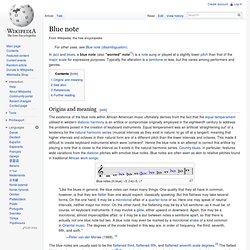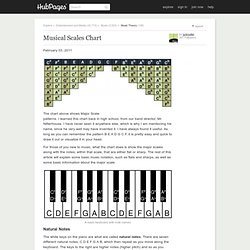

Blue note. Origins and meaning[edit] Blue notes (in blue): ♭3, (♯4)/♭5, ♭7 The blue notes are usually said to be the flattened third, flattened fifth, and flattened seventh scale degrees.[3] The flatted fifth is also known as the sharpened fourth.[4] Though the blues scale has "an inherent minor tonality, it is commonly 'forced' over major-key chord changes, resulting in a distinctively dissonant conflict of tonalities".[4] A similar conflict occurs between the notes of the minor scale and the minor blues scale, as heard in songs such as "Why Don't You Do Right?

" and "Sweet About Me". In the case of the flattened third over the root (or the flattened seventh over the dominant), the resulting chord is a neutral mixed third chord. Music Theory - Intervals & Scales. As of July 1, 2013 ThinkQuest has been discontinued.

We would like to thank everyone for being a part of the ThinkQuest global community: Students - For your limitless creativity and innovation, which inspires us all. How to Find the Relative Minor of a Major Key and Form a Natural Minor Scale. Musical Scales Chart. The chart above shows Major Scale patterns.

I learned this chart back in high school, from our band director, Mr. Nitterhouse. I have never seen it anywhere else, which is why I am mentioning his name, since he very well may have invented it. I have always found it useful. As long as you can remember the pattern B E A D G C F, it is pretty easy and quick to draw it out or visualize it in your head.
Holophonic Sounds - Tricking Your Mind To See Alternate Realities. Ableton Live Tips #7: Vocal Effect Techniques (Radiohead, Nosaj Thing)